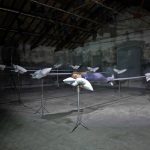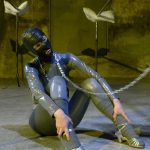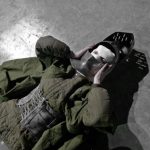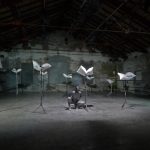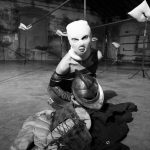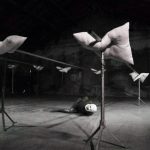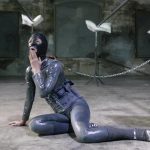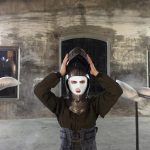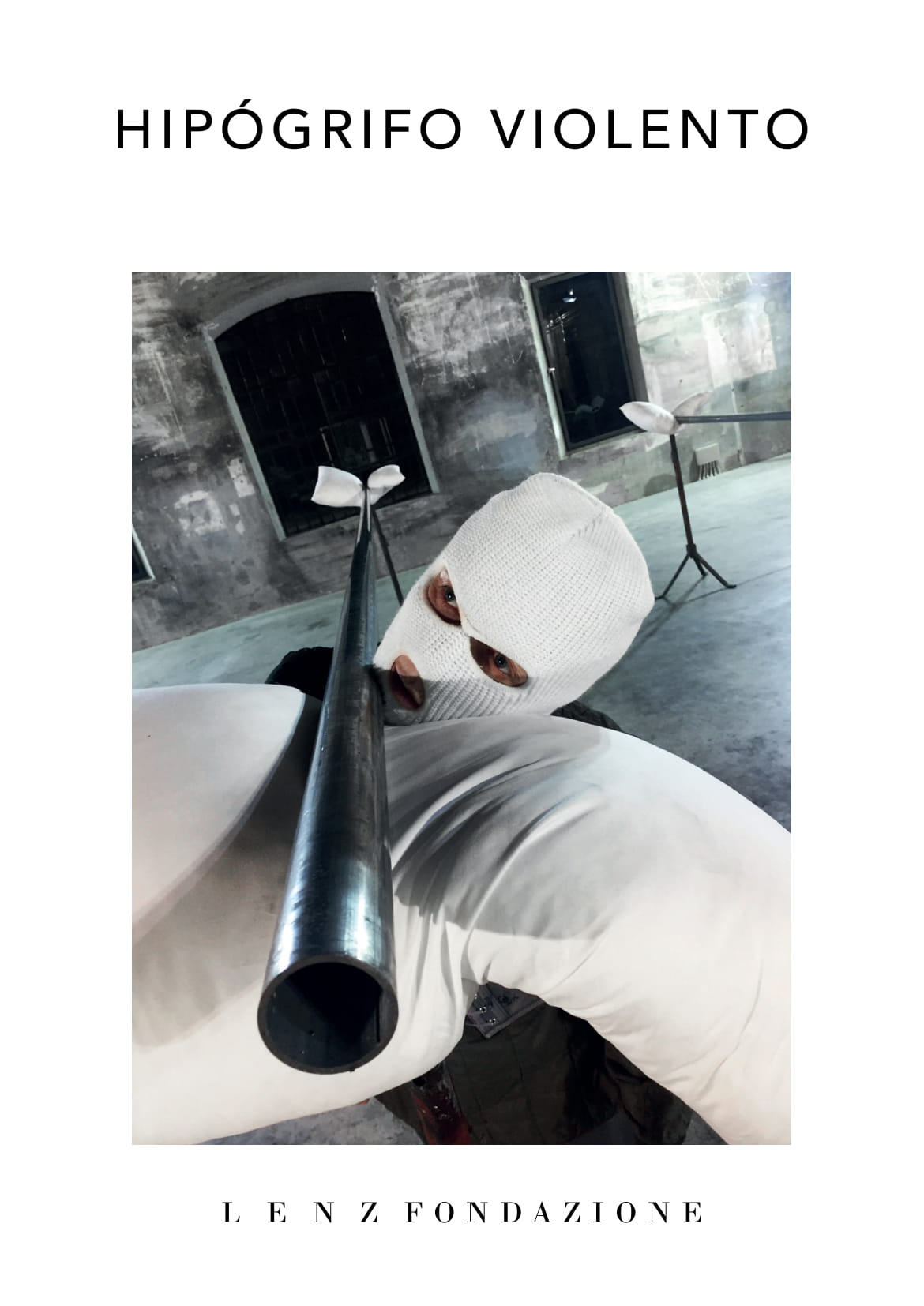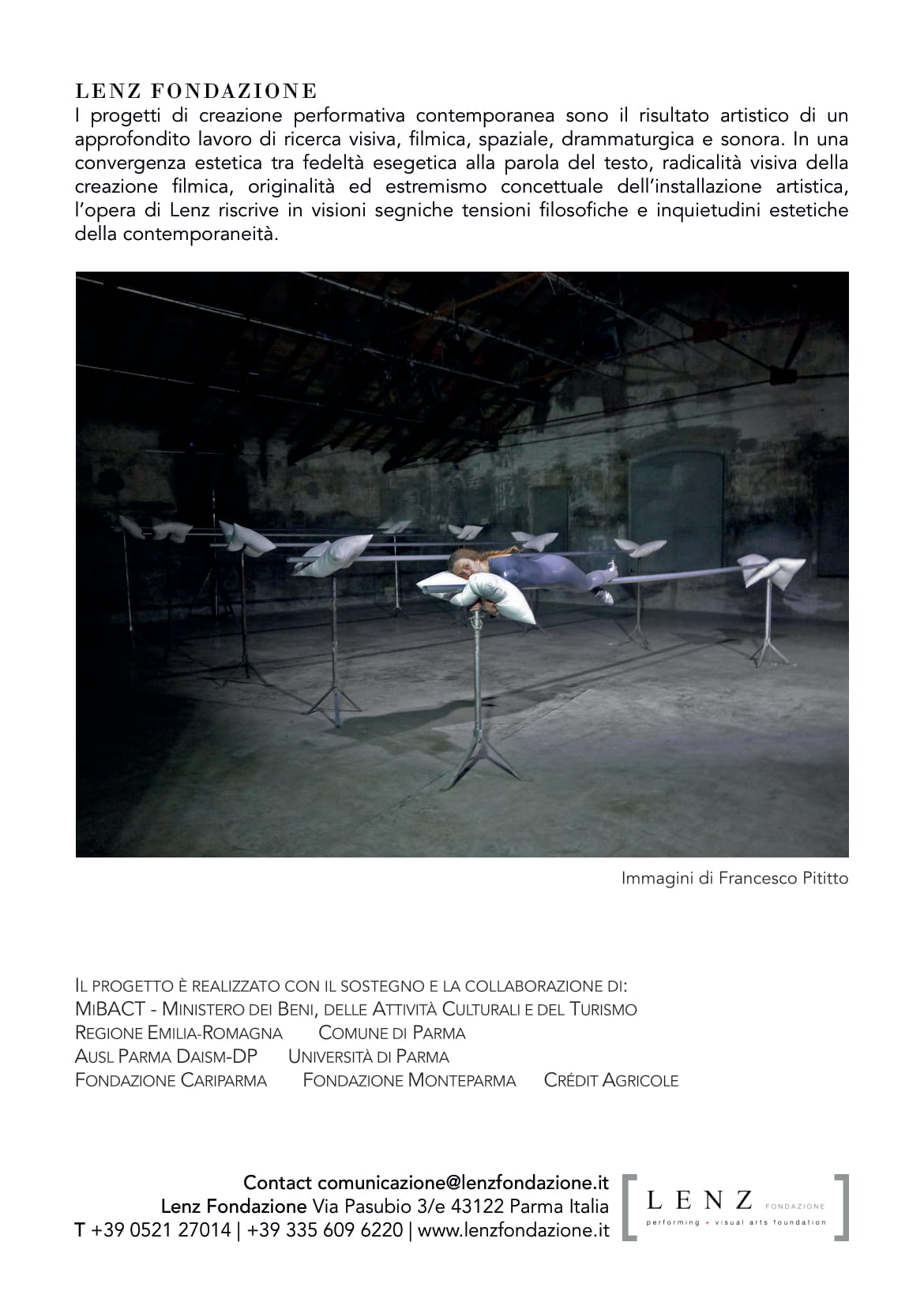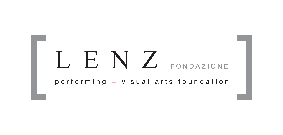
HIPÓGRIFO VIOLENTO (Violent hippogriff)
Performative decoupage of Calderón de la Barca’s masterpiece, Hipógrifo violento isolates life and dreams, real and imaginary, truth and fiction, make-up and unveiling in the same space-time, taking shape in the double nature of Hippogriff – horse and eagle together – transfigured by Lenz’s iconic actress Sandra Soncini.
The rebel horse is a mythological animal similar to Pegasus, half horse half bird, the same one that in the Furious Orlando takes Astolfo to the moon. The violence and power of his momentum are limitless, descending down a mountain. And above Rosaura, who bursts onto the scene. Violent hipógrifo,/ who runs even with the wind,/ where, ray without flame,/bird without range,/fish without scale,/and brute without instinct/natural, to the confused labyrinth/of these naked rocks/destruct yourself, soar and disrupt yourself?
What’s left of lightning if you take away its flame, or a bird without feathers and colors? And what of the fish if you take away its scales? Or the beast without its instinct? Its disharmony is reflected in reality, chaos is the beginning of this drama. So is diving without brakes and without wings, down a cliff regardless of one’s weight and the impossibility of flight. As if defying divine power. As if to anticipate the challenge of the protagonist Sigismondo prisoner in the Tower, the final boundary of this crazy race. Sigismondo is also, like the hippogriff, half man and half beast ready, once free, to dive unbridled into the real world.
Rosaura, descended from her horse, will then speak with the multiple voices of her other self – Prince Sigismondo – in an attempt to recompose a poetic fresco that can contain the chaos of the world.
To be an enigma I offer myself,/ because I am not what I seem/ nor do I seem what I am.
Each work imposes its own language, a specific methodology of approach: not only to the text, but to the scenic physics. The dramaturgy of the three new Calderonians – Other state, Violent Hipógrifo, Flowers like stars? – is a refraction of the actresses’ biography. The Solo indicates, in a vocal or instrumental work, the parts entrusted to a single voice or a single instrument, and more widely a performative act interpreted by a single performer; in fact, if we think of the artist’s condition of solitude on stage, this adjective fully gives us back the existential measure of this creative process.
The relationship between our research on the works of Calderón and the biography of the interpreters is very important. Baroque theatre is generally considered a theatre of allegorical identities: One represents All, the parable of Man is valid for the whole Humanity. On the contrary, in our reading of Calderón, the function of negative or ambiguously positive heroes – such as Sigismodo, Rosaura, Clarino, Fenix, Fernando – exalts the weakness, vulnerability and disturbances of those figures, transforming them into disturbed and disturbing subjects.
We have chosen to give body to these three suns by modulating the lives of the ultra-female characters as a meta-biography: they already tell, in a circular future, what these three interpreters have lived intimately and artistically. These three works tell three biographies but also three indissoluble artistic unions.
Sandra Soncini embodies a very long piece of our history, an artistic conjunction that began in the late eighties: a really long, intense period, with estrangements and returns. This amorous oscillation reinforces the sense of this new work of ours, Violent Hipógrifo: we left the accent in Castilian, to indicate already in the sound of the first word-voice the dynamic intention, the jump, the tear, the shudder, the existential gallop of the interpreter/character.
Sandra Soncini played Rosaura in Life is Dream seventeen years ago: this Violent Hipógrifo certainly has memory of that scenic experience, but it has a profoundly different aesthetic substance. Violent Hipógrifo does not simply extract Rosaura from the overall context of the work – Life is dream – but stratifies its textual dimension by wedging the inflections of the antagonist Sigismondo into the dramaturgical drawing.
Francesco Pititto, who is in charge of its dramaturgy, has given shape to a chessboard figure, whose presentia manifests itself as a mosaic of moods, passions and contrasting impulses. Through these character oscillations, we have given psychic body to our Hipógrifo, in search of a scenic biography that would put in the foreground the existential failure, the unstable identity of the subject in the contemporary world.
In an interweaving of different and apparently disconnected sequences, the performer’s path is marked by an unstoppable dramatic pantoclastia: from a puppet disguised as a man to a tearful and violent child, from an immoral and onanist male to a dysphoric and shapeless female, from an altered mystic to an androgynous and grotesque mask.
With the performer – Sandra Soncini – an immediately physical vision of the work prevails, since her artistic path comes from dance, but it turns almost suddenly, for a sort of aesthetic miracle, into strong verbal tension. I believe that in Italy there are very few actresses with these characteristics. Sandra has mixed, without suffering, the two souls of dancer and actress: the work is born on her and with her. Violent Hipógrifo doesn’t need decorative scenographic devices nor technological artifices. It shows itself in an installation structured in anonymous iron material segments, which deform and wound the soft belly of whitish and lardishly soft pillows. Among those plastic traits of broken waist/dreams is the merciless, deformed, implacable and strident human body.
Sandra Soncini begins her artistic career as a dancer, perfecting herself with various choreographers including Carolyn Carlson, Teri Weikel, Michele Abbondanza, Fabrizio Monteverde. From 1986 to 1990 she dances with Era Acquario Company directed by Thierry Parmentier and Lucia Nicolussi Perego. In 1990 she takes part in the Lenz Rifrazioni Danza project dedicated to Satie and in 1991 starts practicing theater with Lenz Rifrazioni Teatro. At the same time, she devotes herself to teaching dance and choreography. In 1995 she’s the choreographer of Über das Marionettentheater. Marionette Theatre essay, for the Dance Dramaturgy Laboratory – Practices of Theater and she takes care of the choreographic movements of Lenz Rifrazioni’s productions The fight of the blind with the pig and The Schroffenstein family. In 2000 she collaborates with Franco Scaldati and Lenz Rifrazioni in Ur-Hamlet, in which she plays the role of Ophelia. In the three-year project dedicated to Goethe’s Faust by Lenz Rifrazioni (2000_2002), she plays the role of the protagonist, eventually summarizing the three years of work in 2004 in Faust Memories, a monologue directed by Maria Federica Maestri. Also in 2004 she works in the monologue Fàbrica Negra by J. de la Cruz, directed by Francesco Pititto, with whom she also collaborates in the staging of poetic texts by Bacchini, Eliot, Pound, Pascoli, Yeats, Rilke. The relationship with Lenz continues interpreting Catharina von Siena by J.M.R. Lenz, taking part in the projects on fairy tales drawn by the Grimm (Snow White and Tom Thumb) and Andersen (Red Shoes), the resumption of the play dedicated to Bruno Longhi and the trilogy from Calderón de la Barca (2003_2006): Life is Dream, The Magical Prodigious, The constant prince. In 2006 she deepens the poetics of J. de la Cruz with the monologue Canciones del alma always directed by F. Pititto. In 2008 she makes her debut with the performance I, taken from Ovidio’s Metamorphosis, directed by M.F. Maestri. At the same time she begins the collaboration with Accademia degli Artefatti, directed by Fabrizio Arcuri, participating in the production of One Day e di Shoot, find the treasure and repeat by M. Ravenhill. In 2011 she works in the episode Burial, the first of the five performance chapters of Lenz’s Isle of Dogs and in the same year she takes part in the new production of the Accademia degli Artefatti Horace and Curiatians from Brecht. In 2012 with the Accademia degli Artefatti she makes her debut with Blood on cat’s neck by R.M. Fassbinder and with Taking care of baby by D. Kelly. In 2013, directed by M.F. Maestri, she reinterprets Kleist’s monologue Penthesilea. In July 2014 she presents, under the direction of F. Arcuri, Sketches from FaustIn & Out by E. Jelinek, and then debuts in the full version with FaustIn and Out – below above inside outside Goethe’s Faust. In 2016 she collaborates with Lenz making her debut as a protagonist in the staging of Macbeth, by Shakespeare, together with the guests of REMS – former Judicial Psychiatric Hospitals – and participating in Autodafé, site-specific installation and performance set in the Napoleonic Wing of the former Prison San Francesco in Parma, commissioned by the Verdi Festival 2016, and Romeo and Juliet Concert, proposition by the composer Carla Delfrate, score for actress voices only. In 2017 she is among the interpreters of Paradise. A Sacred Piece by M.F. Maestri and F. Pititto, commission of the Verdi Festival 2017 starting from the Four Sacred Pieces by G. Verdi, the second part of a project dedicated to Dante Alighieri’s Divina Commedia. In 2018 she re-interprets in a new version the monologue inspired by the figure of Faust, Faust Memories by Goethe directed by M.F. Maestri. She takes part in the site-specific creation The Great Theatre of the World, Lenz’s project for the Monumental Complex of the Pilotta on the occasion of the 400th anniversary of the Farnese Theater of Parma. She re-interprets the role of Lady Macbeth in Verdi Macbeth, scenic and musical work created by Lenz on special commission of the Verdi Festival 2018. In 2019 she participates in the Oresteia project, playing the role of Clytemnestra in Oresteia # 1 Nests and Oresteia # 2 Milk, directed by M.F. Mastri. She takes part in La Vida es Sueño, an auto-sacramental from Calderón de la Barca, site-specific by Lenz in the North Wing of the National Gallery of the Monumental Complex of the Pilotta di Parma.
VIOLENT HIPÓGRIFO
from Life is dream by Pedro Calderón de la Barca
Translation, dramaturgy and imagoturgy | Francesco Pititto
Direction, installation, costumes Maria Federica Maestri
Interpreter | Sandra Soncini
Music | Claudio Rocchetti
Care and organization | Elena Sorbi, Ilaria Stocchi
Press office, communication, promotion | Michele Pascarella
Technical care | Alice Scartapacchio
Technical assistant | Marco Cavellini
Video Media | Doruntina Film
Production | Lenz Foundation
Duration | 50 minutes
trailer:
full video:
An activity of expunction and cutting, also with fragments in the original language, which recalls certain disguises by Edoardo Sanguineti, also for the total freedom regained in the text and in its full availability of the scene [more].
Maria Dolores Pesce, Dramma.it
Instinct is left to free rein, the natural order of things is subverted by a continuous exchange of genres, attributes and qualities that make tangible the idea of a psychic cosmos that draws strength and nourishment from chaos [more].
Emanuela Zanon, Juliet Art Magazine
Hipógrifo has as a scenography an expanse of long innocent tubes (a topos of the company) cut and arranged on cushions that soften their contact with the metal stands, on which they rest, in an aesthetic clarity that has the dignity of an installation [more].
Carlo Lei, Krapp’s Last Post
What remains of the original pivotal question? So what is life? A dance of vulnerable, disturbing, passionate, impulsive, without memory figures, who have an ancient, tribal mask of Death on their face, with white lead, pitch black eyes and blood red lips [more].
Francesca Ferrari, Teatropoli








